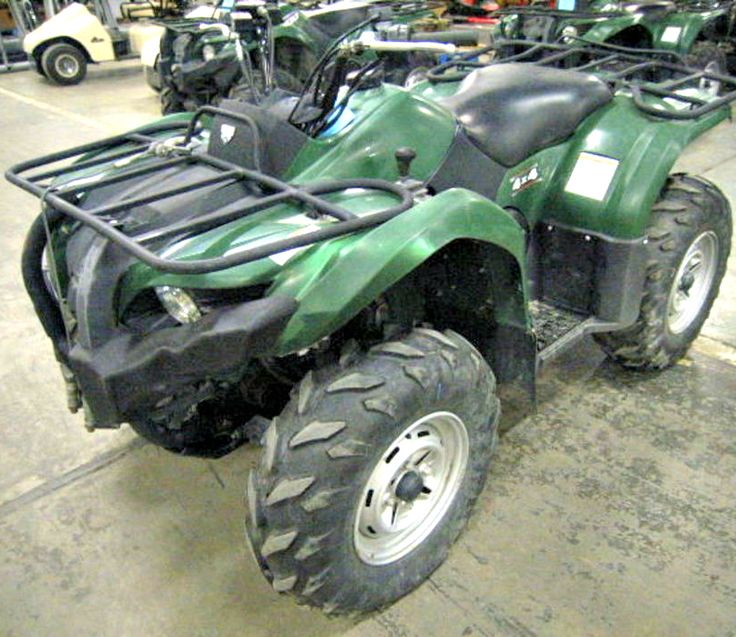ATV stands for All-Terrain Vehicle, and as the name implies, it’s a type of vehicle designed with off-road riding applications in mind. But this does not necessarily mean that all ATVs need to be four-wheel drive.
Most recreational and utility ATVs on the market are four-wheel drive (also known as AWD, 4WD, or 4X4), while most sport- or racing quads and all youth ATVs are only two-wheel drives (also known as 2WD or 2X4).
This post will look at some of the pros and cons of 2WD vs. 4WD in an ATV. Hopefully, it will help you decide whether a 2×4 or a 4×4 ATV is the right choice for you.
As in most cases, when you put two alternative options up against each other, you’re able to identify both some advantages and disadvantages they have against each other. The same applies when comparing 2WD and 4WD in an ATV.
If you go down an incline and suddenly find yourself in a situation where you need to back up the hill, you’ll be glad you have 4X4.
When riding downhill, most of the weight is placed on the front wheels. There is not much traction on the rear wheels. This will often leave the rear wheels on a 2WD spinning without pulling you back up.
On a 4WD, however, the front wheels with a lot of traction have a much better chance at pushing the ATV in reverse.
When you drive down a hill, it’s recommended to use engine braking rather than applying the brakes for a more controlled descent.
Using brakes instead of engine braking increases the chance of locking out the wheels, causing the ATV to slide.
Since there is little traction on the rear wheels, engine braking will have less effect than on a 4WD, where both the front and rear wheels will help control the speed.
In a hill where you would need only engine braking when riding a 4WD, you will likely have to apply the front brakes as well when riding a 2WD.
The front-wheel-drive components’ added weight makes the ATV a bit less likely to flip backward when going up a steep hill.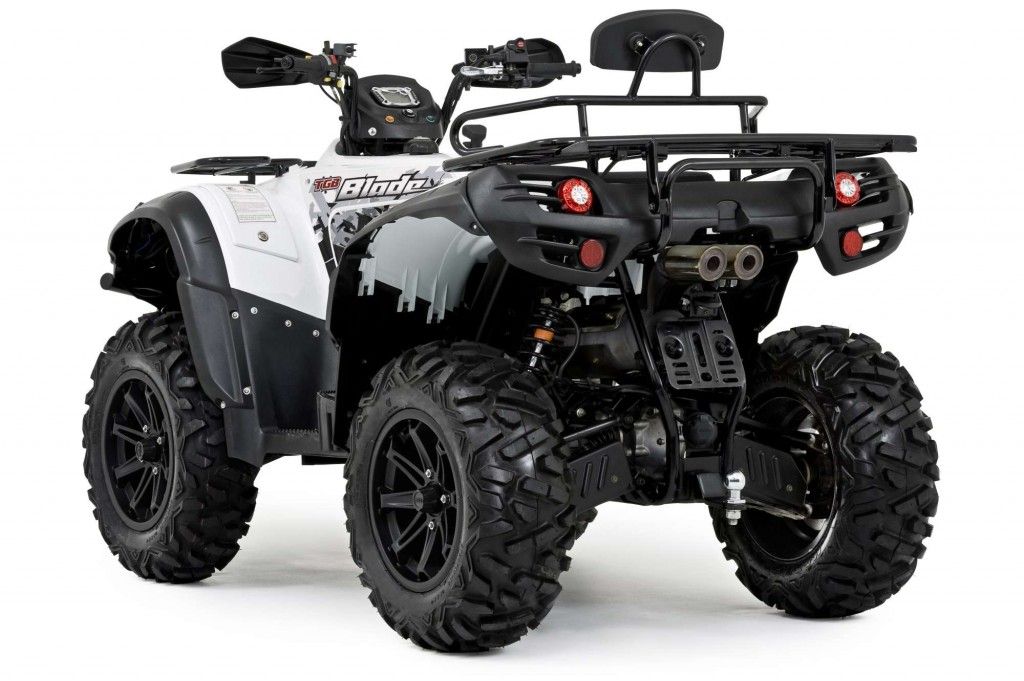 Also, it helps the front tires grip better, increasing your chances of making it to the top.
Also, it helps the front tires grip better, increasing your chances of making it to the top.
A 4WD is less likely to flip because the front wheels help pull the bike up the hill where the rear wheels on a 2WD push. When the rear wheels suddenly regain traction, it will cause the ATV’s front end to lift.
Front wheels that regain traction do not have the same effect. They will merely help pull the vehicle forward.
Lean forward when riding uphill to reduce the chance of tipping even more. This will move the center of gravity forward and put more weight on the front wheels to increase traction.
In dry, grippy conditions such as on dry dirt and sand, a 2WD will be able to go most places where a 4WD would go.
But after some heavy rain or in the snow, is where the 4WD earns its keep.
You could use your winch to pull your 2WD out of the mud when you get stuck, but you’ll be using it much more often than with a 4WD.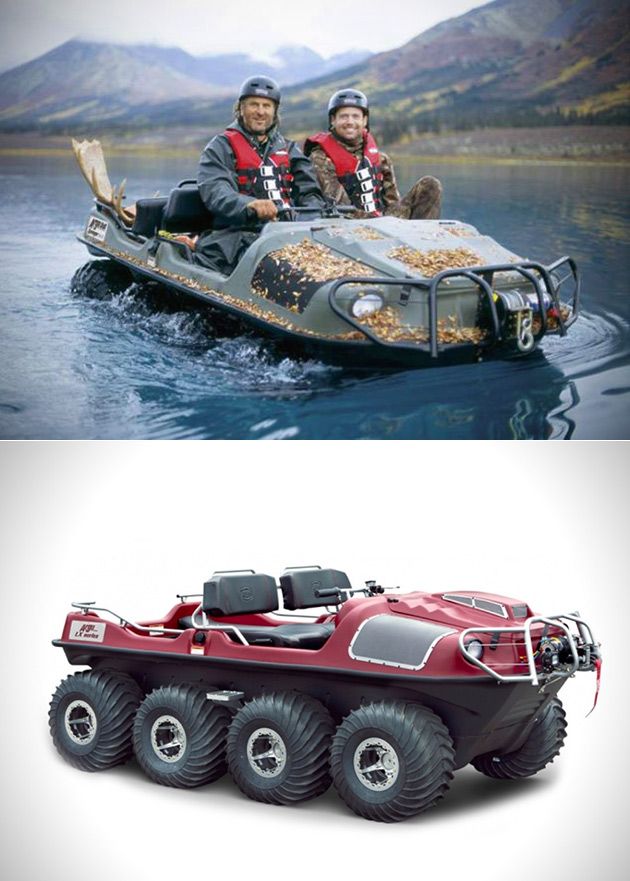
A 4WD won’t prevent you from ever getting stuck, but it may provide that little extra push you need to make it through the mud hole or up a slippery hill.
Make sure to get a model that offers locking front and rear differentials as well for optimal traction.
With 2WD, you typically need the momentum of speed to get through the tricky spots. This increases the chances of losing control and hitting something along the trail.
The added traction you get with a 4WD allows you to crawl your way through challenging terrain while keeping the speed at a controllable level.
This is particularly useful when:
A 2WD ATV is typically spinning and churning the tires to find traction more often than a 4WD.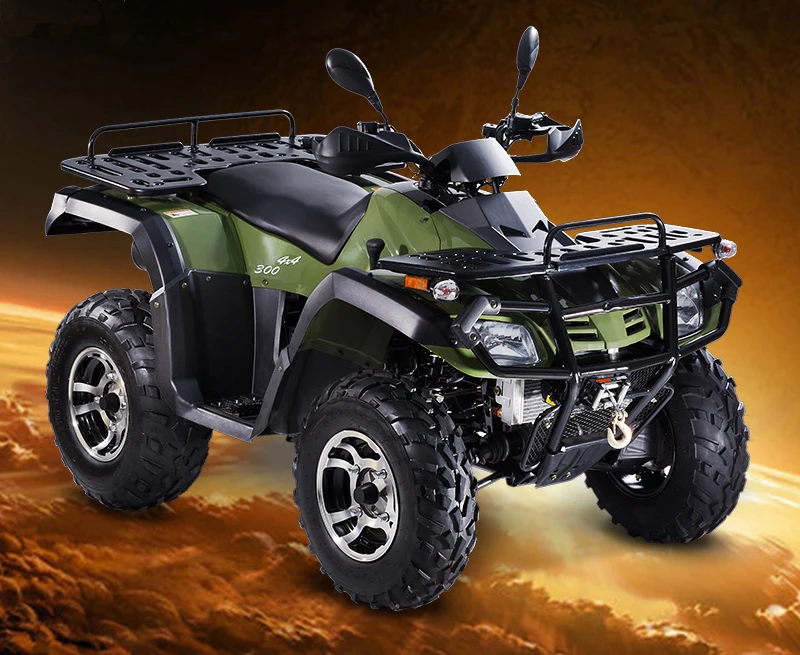 Not only is this true when climbing a slippery hill, but it also happens during moderate acceleration on the trail.
Not only is this true when climbing a slippery hill, but it also happens during moderate acceleration on the trail.
Some trails don’t allow 2WD sport quads at all due to the damage they inflict. No matter how carefully you ride, you will likely tear up the surface of the trail.
And hopefully, it goes without saying that leaving deep ruts out in the woods should be avoided.
Most modern 4WD ATVs come with the ability to switch off the drive to the front wheels, making it a 2WD.
Turn on or off 4WD with the push of a button.This feature provides the ability to choose 4Wd or 2WD based on which option best fits the riding situation.
It’s like having 4WD in your truck: You will usually not need it, but when you do, it sure is nice to have.
2WD drive systems are much more straightforward and, thereby, cheaper to produce. Most 2WD quads come with chain drive, consisting of a front and rear sprocket connected by a metal chain.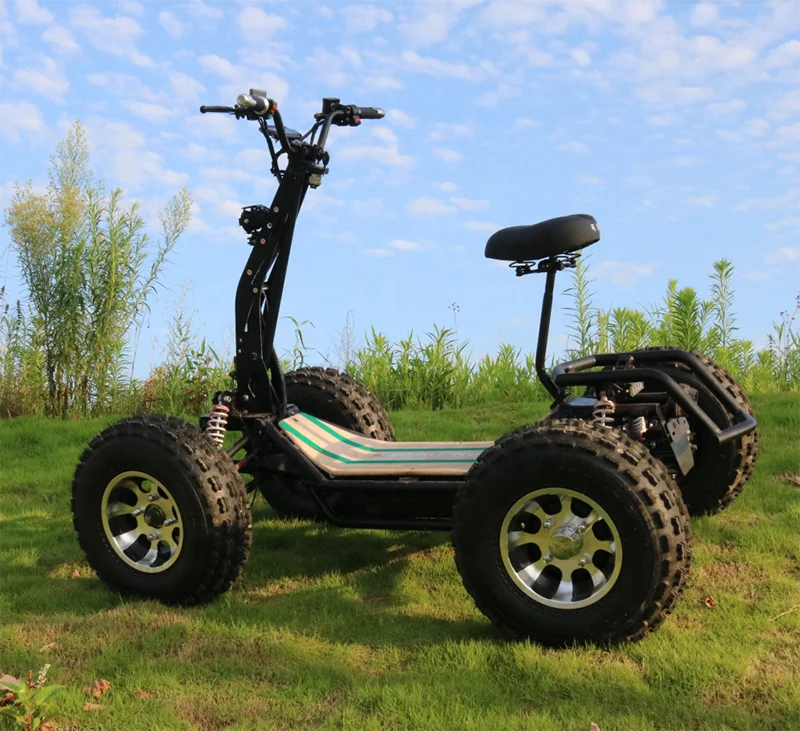
A very few ATVs, such as the Honda Rancher, come with rear shaft drive. While a bit more expensive than a chain drive, it is much cheaper than a 4WD model. The Honda Rancher costs $1000 more than the 2WD base model.
The lower weight of a 2WD can be a pro or a con, depending on the riding situation.
For racing purposes, it’s essential to keep the overall weight of the vehicle low. The added traction you get from a 4WD won’t usually justify all of the extra weight added by installing the front wheels drive components.
To get 4WD, you need a transfer case, an extra drive shaft, a front diff, and two CV axles. These components can add 10 to 20 lb to the overall weight of the bike.
Maneuvering a 2WD properly off-road without getting stuck off-road takes a lot more energy than a 4WD.
If you’re looking to keep up with the four-wheel drives, you need both strength and stamina.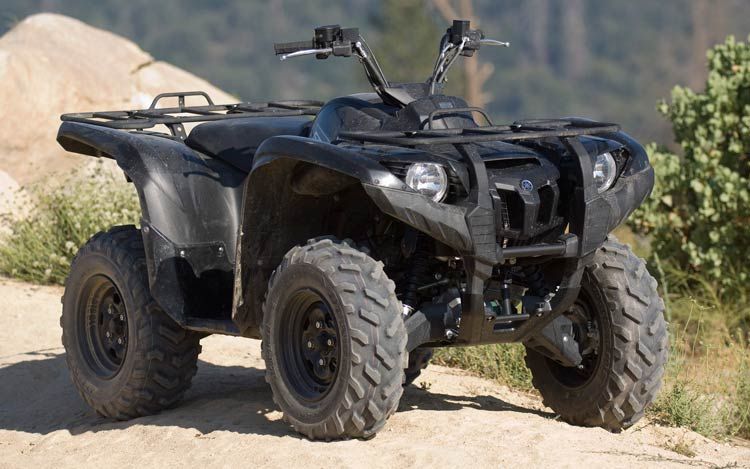 And you better be ready for a pounding. At the end of the ride, you may find yourself exhausted, where your friends that ride 4WD have energy to spare.
And you better be ready for a pounding. At the end of the ride, you may find yourself exhausted, where your friends that ride 4WD have energy to spare.
Most two-wheel drives offer a tighter turning radius because of the lack of cv-joints to the front wheels.
This, in conjunction with a lighter weight, makes them more agile. Some riders prefer 2WD over 4WD because they are easier to maneuver in tight spots.
Some but not all 4WD ATVs are a bit harder to steer than a 2WD due to the front driveline’s added complexity. You may find that it gets easier to navigate as soon as you disengage the four-wheel drive.
This downside is significantly reduced if you opt for a model with power steering.
Here are some of the pros and cons of having power steering on your ATV.
2WD ATVs come either with shaft drive or chain drive.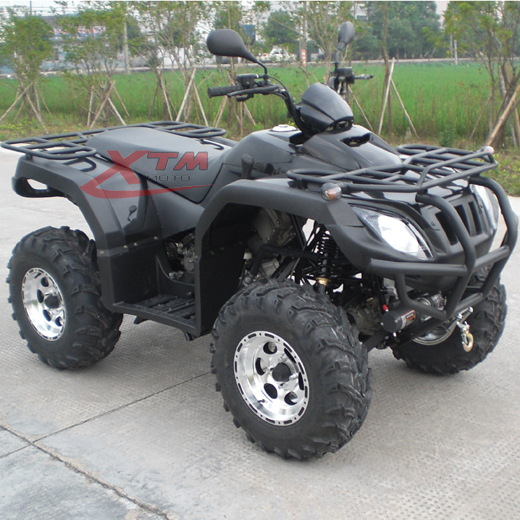 Shaft drive offers lower maintenance, better ground clearance, and better reliability.
Shaft drive offers lower maintenance, better ground clearance, and better reliability.
On the other hand, Chain-drive is lighter and faster but does require some maintenance to keep the chain and sprockets in good shape. The rear sprocket protrudes below the rear axle, which can be a hassle when you ride off-road.
Most 4WD ATVs offer independent front and rear suspension rather than the solid rear axle you get with a 2WD model.
Independent rear suspension offers benefits such as less taxing on your body, and overall better off-road capability, especially in uneven terrain.
All ATVs can look the same for an untrained eye, but they are not. ATVs are used for a range of riding applications ranging from high-speed racing – to low-speed, heavy utility work.
A vehicle designed for extreme off-road or utility work needs different features than one set up for speed or racing.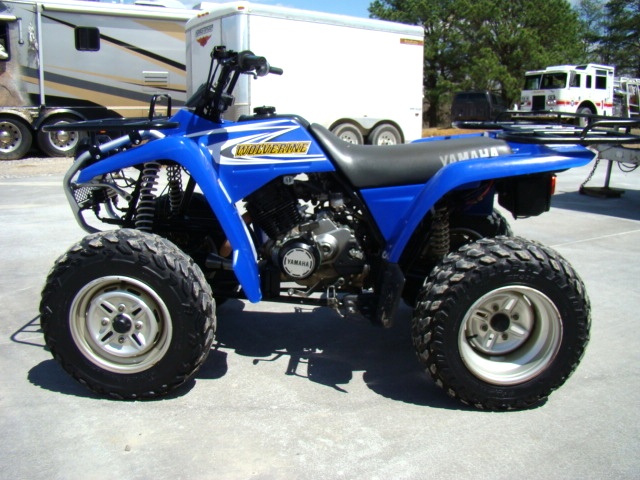
Sometimes low weight and speed are more important than traction. Other times it’s essential to keep the cost within budget. All of these are factors that determine which design the manufacturer chooses for their different models.
If you’re in the market for a new ATV, you may be wondering whether you need a four-wheel-drive machine or if you’ll get by just fine with one that has only a two-wheel drive.
To better answer this question, you need to consider a few things like:

Ultimately it will be up to you to weigh the pros and cons in the environment in which you’ll be using the ATV.
4WD is useful when you ride in uneven terrain with steep hills and in soft or slippery terrain where push-pull traction is needed.
Typical riding applications where 4WD is useful:
2WD is the better alternative in racing where you need speed, lightweight, and nimbleness.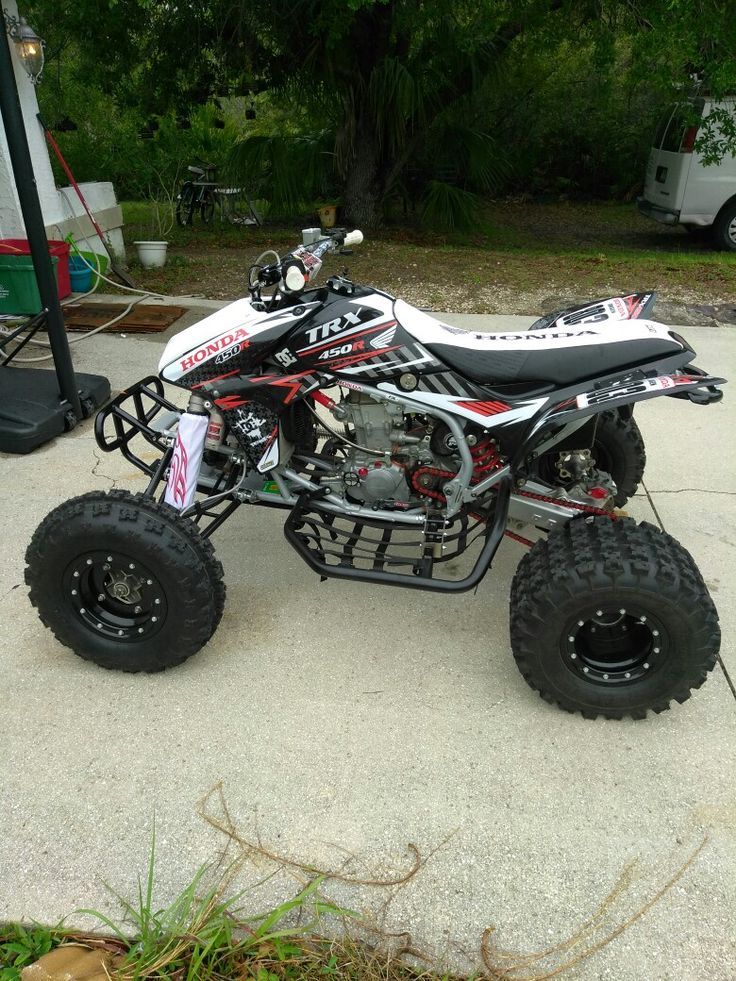 They are also a good alternative on youth or budget models where low cost and simplistic design is vital.
They are also a good alternative on youth or budget models where low cost and simplistic design is vital.
The lower weight of a 2WD helps reduce the risk of injury if the bike lands on top of the rider in a crash. This is a desired feature in racing where you ride on the limit and with youth models ridden by young and inexperienced riders.
Typical applications where 2WD is useful:
Each of the numbers in 4X2 has a specific meaning.
The first number refers to the total number of wheels on the vehicle. In the case of 4X2, the bike has four wheels in total.
The second number refers to the number of wheels that receive power from the engine. In the case of 4X2, two wheels make the ATV move.
4×4 refers to a vehicle that has four powered wheels out of four wheels in total.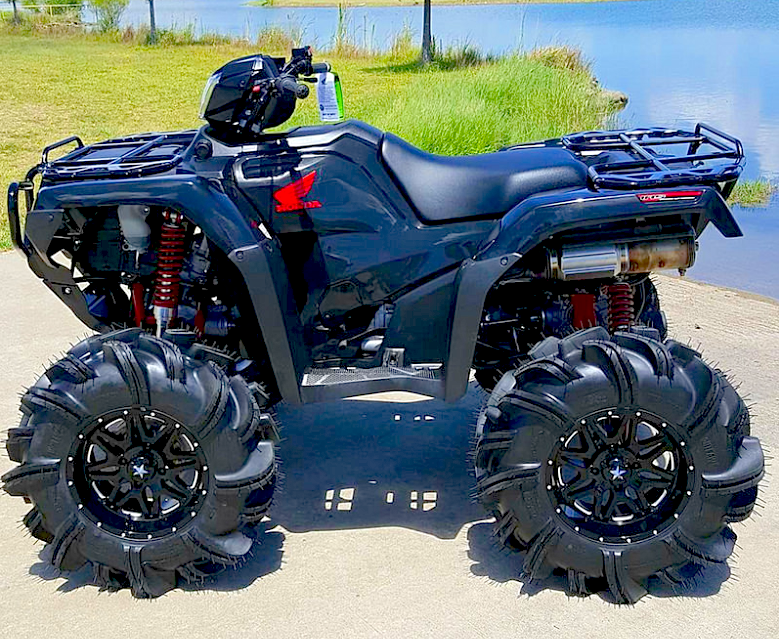 4WD, on the other hand, refers to a vehicle with four powered wheels but does not say anything about the vehicle’s total number of wheels.
4WD, on the other hand, refers to a vehicle with four powered wheels but does not say anything about the vehicle’s total number of wheels.
While four wheels are the most common on cars, trucks, and ATVs, there are vehicles such as commercial trucks with six wheels. A six-wheel truck with 4WD would be a 6X4
A 4X2 is typically faster due to the lighter overall vehicle weight; as long as you ride somewhere, you get adequate amounts of traction with only two driven wheels.
All current models of Polaris RZR come with four-wheel drive.
Almost all UTVs now days are 4WD, some with an option to switch to 2WD. 4WD or AWD will make keep better from getting stuck and accelerate faster. When 2WD can save your lawn if you need to drive on it.
If you are in the market to purchase a new UTV or SXS (side-by-side), considering between the different types of UTVs in the market can be a daunting task. Is 4×4 that important on an SxS? Are 4WD UTVs similar to all wheel drive (AWD) UTVs? Is there anything on a rear wheel drive worth considering? In this guide, we will answer these questions and more.
Is 4×4 that important on an SxS? Are 4WD UTVs similar to all wheel drive (AWD) UTVs? Is there anything on a rear wheel drive worth considering? In this guide, we will answer these questions and more.
We’ll take a closer look at the four wheel drive (4WD), all wheel drive (AWD), and rear wheel drive (RWD) UTVS, and how you can choose between them. This article will focus on the utility segment.
Table of Contents
Here, let us discuss terminology. The 4WD and 4×4 terminology can sometimes be confusing, especially for beginners, and the terns 4WD and AWD are also often used interchangeably. Before everything else, here we will discuss their definitions so we are on the same page when we’ll discuss the pros and cons of the different systems further below.
The terms 4×4 and 4WD, are often used interchangeably, but not all 4WD vehicles are 4×4 vehicles.
In a 4×4, all four wheels receive power from the engine and rotate.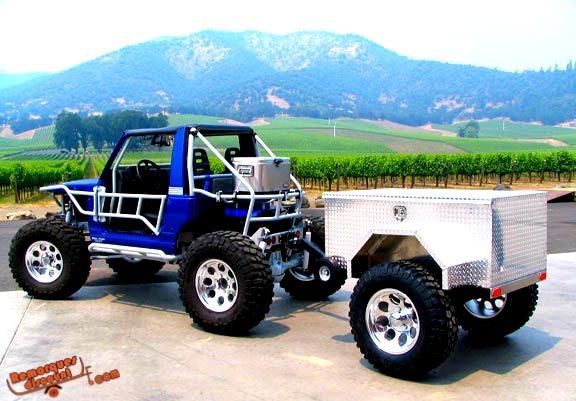 In a 4×2, on the other hand, only two of the four wheels receive power. So, all 4×4 vehicles have 4WD, but there can be cases where an eight-wheel truck has two powered axles, and so it’s technically an 8×4 truck and not 4×4.
In a 4×2, on the other hand, only two of the four wheels receive power. So, all 4×4 vehicles have 4WD, but there can be cases where an eight-wheel truck has two powered axles, and so it’s technically an 8×4 truck and not 4×4.
So, when you are choosing between different UTV models, first look at the number of wheels, then check how many of these wheels receive power from the engine.
AWD and 4WD used to be two very different systems but in recent years the gap between the two has been blurred.
AWD, stands for All Wheel Drive, will drive power to all wheels without any input from the driver, while in 4WD (four wheel drive), the driver typically can select whether to operate all wheels or just two and can also select between low and high ranges.
Another key difference between the two is their philosophies: a 4WD system tries to drive as much power to all wheels as equally as possible for maximum traction. On the other hand, an AWD system is about varying the amount of power driven to each wheel (either electronically or mechanically) according to the terrain’s needs, and the process is all automated.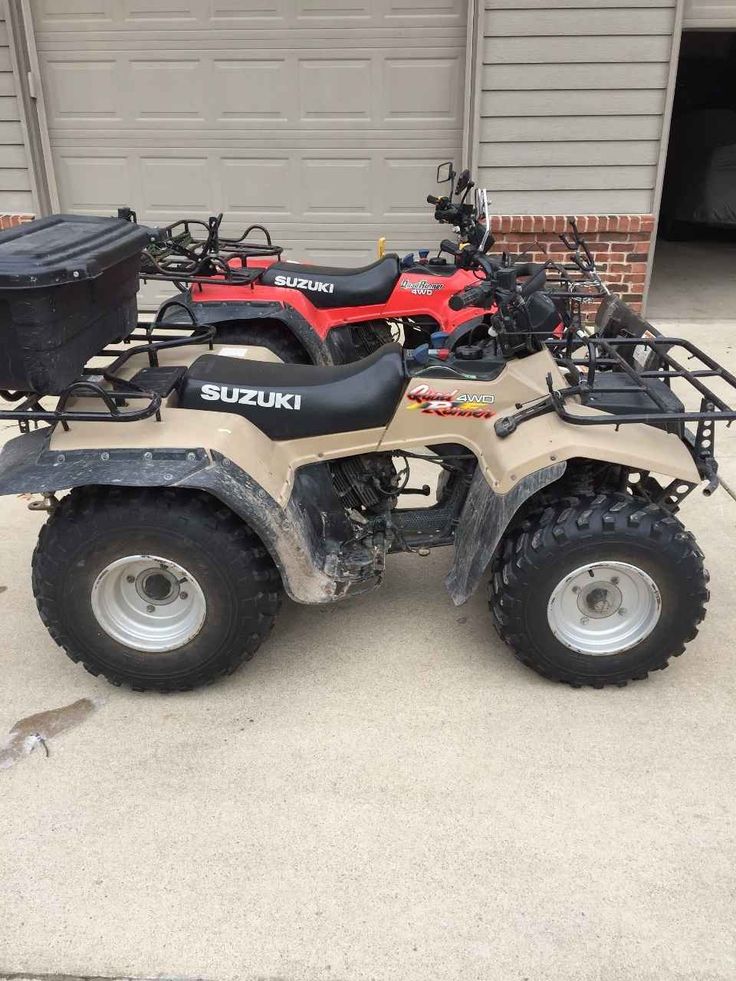
So, technically when discussing cars, trucks, or other road vehicles, AWD is different from 4WD. However, since most UTVs nowadays use the continuously variable transmission (CVT), the lines are further blurred and so typically the terms 4WD and AWD can be used interchangeably for UTVs.
As the name suggests, in a rear wheel drive (RWD) UTV, the power of the engine is only directed to the back wheels. So, technically it is a 2WD (two-wheel drive) system. So, in an RWD UTV, the front wheels are actually passive and don’t receive any power from the engine.Polaris RZR 4WD Sport model in sand
So, what should be the main factors to consider when choosing between an AWD UTV or RWD UTV? In this section, we will discuss these different factors one by one. Let’s start with the benefits of the AWD UTV vehicle.
Pros of AWD UTV:
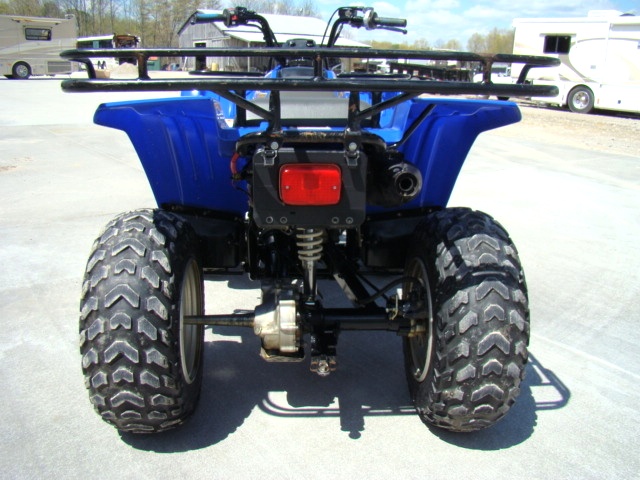 Since all four wheels rotate, it can get you out of situations where two of your wheels are stuck or trapped on slippery surfaces. So, if you are going to ride your UTVs in snowy climates or muddy off-road terrains, we’d strongly recommend getting an AWD UTV.
Since all four wheels rotate, it can get you out of situations where two of your wheels are stuck or trapped on slippery surfaces. So, if you are going to ride your UTVs in snowy climates or muddy off-road terrains, we’d strongly recommend getting an AWD UTV.However, there are also some drawbacks to the AWD system, as we’ll discuss right away.
Cons of AWD UTV:
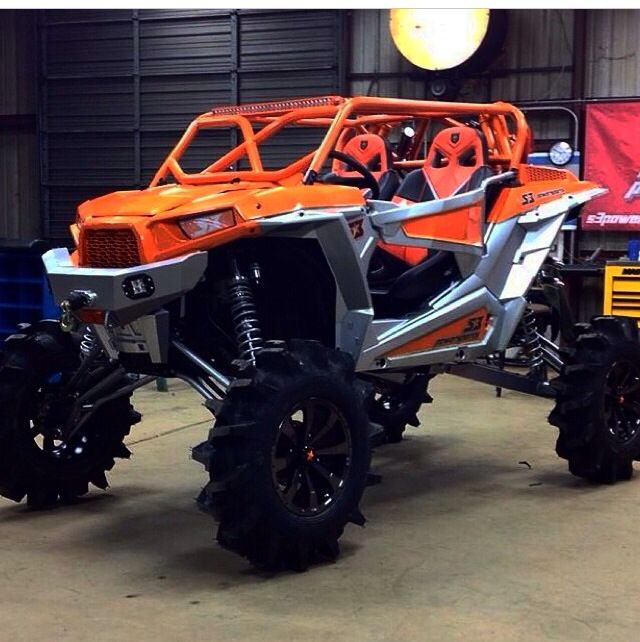 4WD or AWD UTVs have to send power to all wheels, and so will require more energy. RWD UTVs have simpler drivetrains, which will translate into better fuel efficiency in the long-run.
4WD or AWD UTVs have to send power to all wheels, and so will require more energy. RWD UTVs have simpler drivetrains, which will translate into better fuel efficiency in the long-run.Now, let’s move on to the RWD UTVs and their benefits.
Pros of RWD UTV:

There are, however, some drawbacks to consider in RWD vehicles.
Cons of RWD UTV:

With so many different brands offering UTVs at the moment, most of them now offer 4×4 or AWD products. However, not all of them offer good quality 4×4 with optimal performance and design. Below we will discuss some brands that excel with their 4×4 products:
Arctic Cat
A well-known company not only for UTVs but also snowmobiles and ATVs. For this brand, we’d recommend the Arctic Cat Stampede 4×4, which is their new 4×4 model in 2020. The Stampede 4×4 offers an 80HP and 856CC engine, offering an optimal power-to-weight ratio.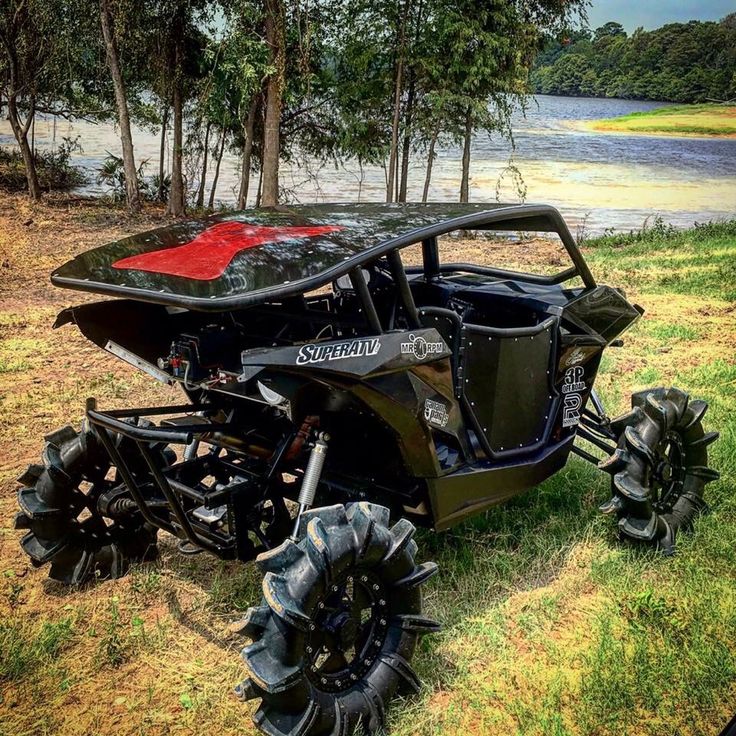
The Stampede 4×4 is an AWD UTV, and so if you are looking for a pure 4WD vehicle, we’d recommend the Arctic Cat Prowler Pro, which offers an 812 CC, 3-cylinder engine.
Kawasaki
Another popular brand, we’d recommend the Kawasaki Mule 4010 4×4, which offers a 617cc V-twin engine. But, Kawasaki also offers various other 4×4 variants that are noteworthy like the Mule SX FI 4×4 and the Mule SX FI 4×4 XC.
As mentioned before. Almost all UTVs now days are 4WD, but some offers the ability to switch drive mode to 2WD.
Polaris Ranger 570
Polaris is arguably one of the most famous manufacturers for UTVs, famous for its use of electric power trains.The Polaris Ranger 570 offers a 44HP, 570cc ProStar 570 engine. This model comes with 4×4 and a button to switch to 2WD. Its not a complete RWD UTV, but the 2-wheel drive can spare your lawn.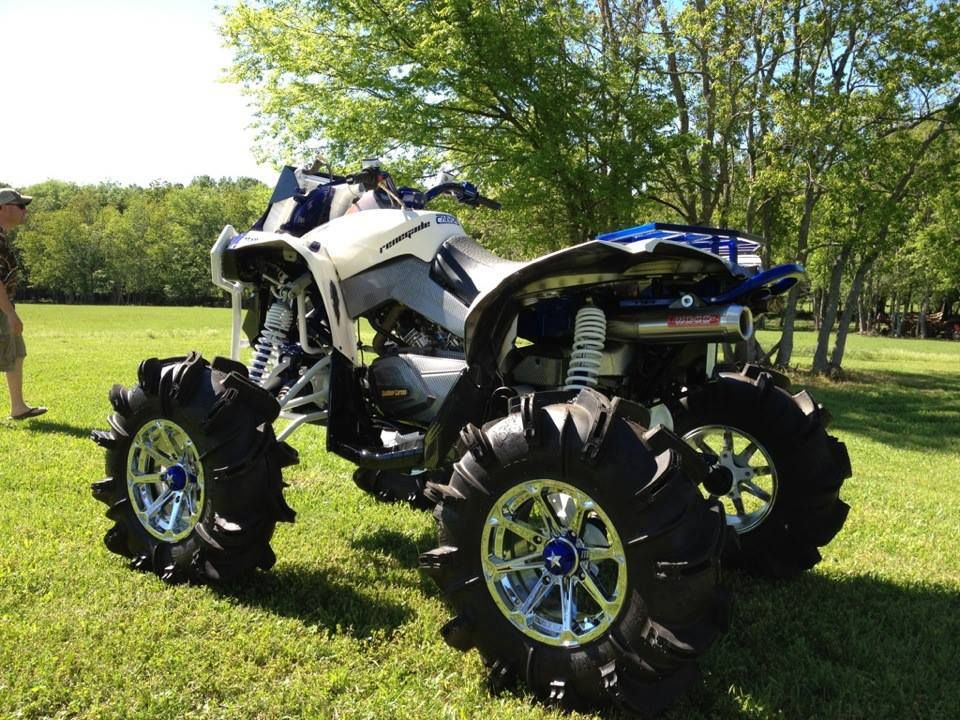 Read more about Polaris All-Wheel Drive Basics at thier website.
Read more about Polaris All-Wheel Drive Basics at thier website.
It can easily handle a massive 1,500-pound payload and offers a durable composite gas that holds up to 800 pounds.
You can find out more specs and info at the Polaris Ranger 570 website.
Polaris Ranger 150 EFI
The Ranger 150 is a UTV for youths. With a 150 cc engine and a 2-wheel drive system this smaller sized UTV is recommended for age 10+ according to Polaris website. This model does not come with 4WD.
Honda
Obviously, Honda is one of the biggest vehicle manufacturers in the world, and now Honda is a well-known manufacturer of UTVs. Although they don’t have a lot of different UTV models at the moment, the Honda Pioneer 500 is a solid contender for one of the best 2WD UTVs around. This one is also a model with both 4WD and 2WD.
The Pioneer 500 offers an efficient five-speed automatic transmission with a single-cylinder, 475cc engine.
You can find more specifications on Hondas website.
In general, the 4×4 or AWD UTVs are the more expensive options compared to their RWD counterparts. However, AWD UTVs will perform significantly better performance in rough terrains like snowy conditions, wet terrains, and other challenging terrains.
So, whether you should get a 4×4 or an RWD UTV will depend on several factors like whether you are going to ride the UTV on rough terrains or if you live in an area with a colder climate. Since RWD UTVs are generally more affordable and can perform really well in dry conditions, they might be a better option unless you really need the AWD’s capabilities to navigate rougher terrains.
To confidently drive through bumps and pits, mud and fords, sand and grass, an ATV needs four-wheel drive. Usually it is plug-in: that is, only one pair of wheels works on a flat, dry surface, and in difficult areas the driver can activate the 4x4 mode (or 4WD, as it is more commonly called).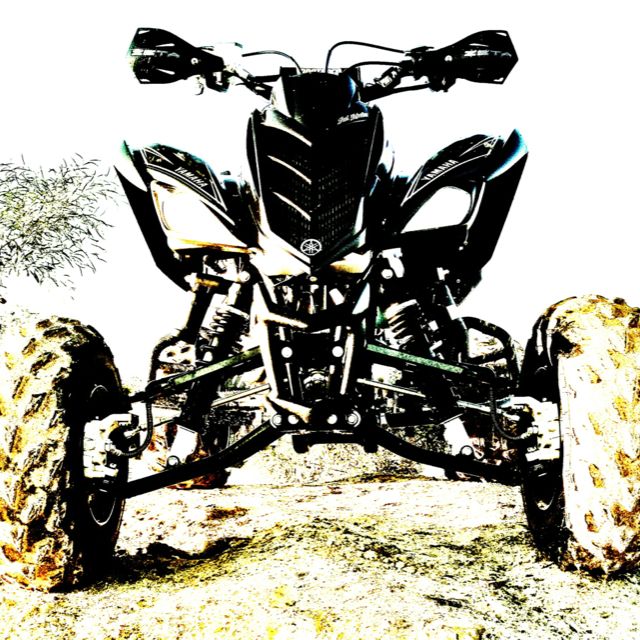
Among the CFMOTO ATVs, all models have a plug-in all-wheel drive, so they are perfect for off-road. We will describe each briefly.
Let's start with the "classic" ATVs with a motorcycle seat (passenger behind the driver).
The most budget ATV in the CFMOTO lineup and on the market in general. The main parameters are as follows:
This quad bike is ideal for beginners, teenagers and also for light off-road use.
Reliable, comfortable and efficient off-road all-terrain vehicle with an affordable price tag, which is suitable for most hobbyists, hunters, fishermen and tourists, as well as for light work.![]()
Of the main features - a 38-horsepower engine, 27-centimeter ground clearance, 2 full-fledged seats (passenger section is non-removable), rear and front luggage racks, and 26-inch tubeless wheels with alloy wheels.
The sweet spot: a two-seat quad bike that suits most hobbyists and will handle most off-road trails. It has a reliable 600 cc engine with 41 hp. It leaves the rider with a good power reserve, but at the same time consumes gasoline economically. And if you want to get more space for luggage in the back, the passenger seat can be easily removed.
Ground clearance is 27 cm - a common indicator for most all-terrain vehicles, which is already enough to force most off-road routes (except the most extreme ones). 26-inch tubeless wheels with alloy wheels also provide good cross-country ability. And the electric power steering will help to keep control and not get tired on a long road.
Among other things: the basic kit includes an electric winch, bumper, hand protection, rear-view mirrors, an electrical outlet and a USB output and a towbar.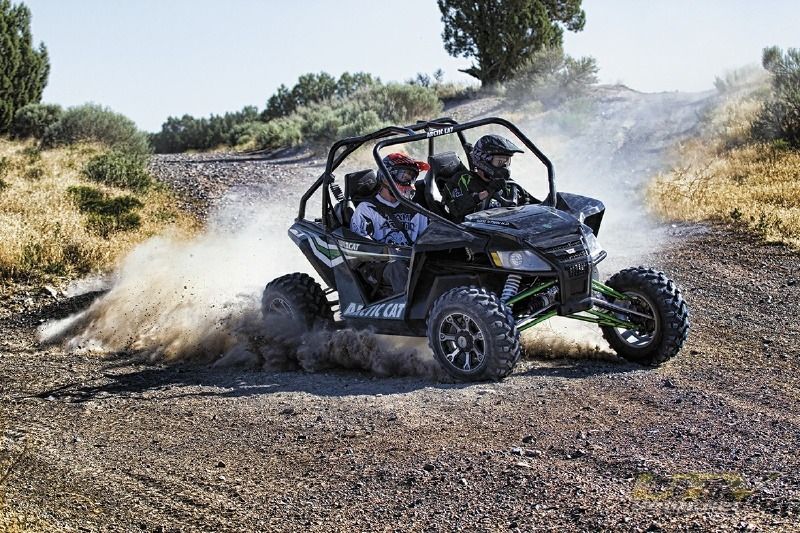
Single-seat shortened version of the previous model, suitable for those who definitely do not plan to ride together. The wheelbase of this ATV is 20 cm (128 cm) shorter, the turning radius is 7.5 cm shorter, and the weight is 14 kg less (366 kg instead of 380 kg). Reduced dimensions and weight slightly increase the cross-country ability of the model.
Improved version of the early X8 HO EPS: a mid-budget two-seat quad with a 65 hp engine, fully off-road ready. A clearance of 30 cm and 27-inch wheels, as well as a motor powerful enough for an all-terrain vehicle, will allow him to drive through difficult sections.
Like other CFMOTO ATVs, this model has electric power steering. The rest of the equipment is also pleasing: there is a tow ball, an electric winch, a bumper, hand protection and cargo platforms. The passenger seat has handles and a backrest, and if necessary, it can be removed.
The most powerful ATV in the CFMOTO range, equipped with a 75 liter 75 hp engine and the most prepared for difficult dirt tracks.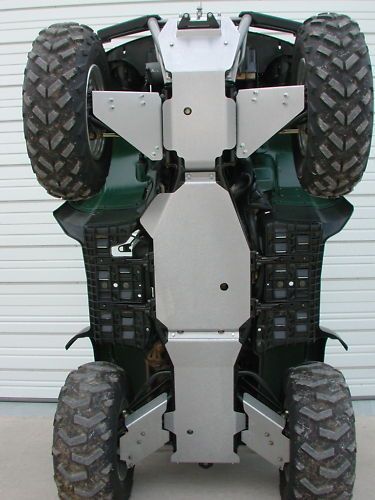 It is worth taking for those who want to go fast, go everywhere, and get the most out of an all-terrain vehicle for work.
It is worth taking for those who want to go fast, go everywhere, and get the most out of an all-terrain vehicle for work.
Removable passenger section with wide backrest and handles. The basic package also includes hand protection, an electric winch, a wide reliable bumper, an enlarged fuel tank and an electric power steering.
To take full advantage of the powerful engine in the mud and bumps, the CFORCE 1000 EPS has a 30 cm ground clearance, a solid, comfortable suspension with long travel, heavy-duty gearboxes and a 4-caliper braking system to stop confidently at any speed. Wheels 27-inch tubeless, with deep tread and alloy wheels.
Now for the buggy with cab and car seat.
The ideal working assistant that can replace "normal" trucks. Structurally, it is a three-seater all-terrain vehicle with a closed cabin (there is a windshield, doors without glasses and a roof) and a folding side body, in which up to 350 kg of cargo can be transported. And if this is not enough, you can also take a trailer: the towbar is already included in the kit.
And if this is not enough, you can also take a trailer: the towbar is already included in the kit.
The UFORCE 1000's cab is designed for comfortable long journeys, with seat belts, heated and adjustable seats, steering column adjustment, windshield wiper, rearview mirrors and a multifunctional instrument cluster with display.
As for cross-country ability: the model has a 72-horsepower engine with an increased gas tank (40 liters), a ground clearance of 26.5 cm, and 27-inch alloy wheels. Suspension travel is average: 180 cm in front and 190 cm in the rear - this is enough to dampen bumps on bumps, but at the same time not sway too much when the body is loaded.
Who should take it? Those who need to transport a lot of cargo to objects without a normal road. For example - to supply research or industrial facilities in forests, for agriculture, for construction, for work in forestry and fisheries and at recreation centers.
CFMOTO's most powerful quad bike: a sporty two-seat buggy that can confidently compete with more famous models of popular brands. Ideal for riding on dry routes, but will also be able to drive on muddy wet off-road.
Ideal for riding on dry routes, but will also be able to drive on muddy wet off-road.
Features a spacious cab with a short windshield, roof and half doors, high fenders and a small rear luggage area. Inside, there are ergonomic adjustable seats with seat belts, and a dashboard with a large display with Bluetooth.
"Sporty" is not just a marketing word for this ATV: the model has an 80-horsepower engine that will allow you to accelerate to 120 km/h with confidence. The suspension is also aimed at high-speed races and steep maneuvers: there is a multi-link suspension with gas-oil adjustable shock absorbers with increased working strokes. The clearance is 34 cm, which, together with 29-inch wheels, allows you to leave the unevenness of the route under the bottom.
Other highlights of the ZFORCE 1000 include electric power steering, a reinforced steel frame and a high-capacity battery.
You can buy ATVs from our review in our stores by ordering online or by coming in person.
The winch is an indispensable accessory for any quad biker. Off-road is fraught with a lot of surprises and surprises, most of which are not very pleasant. And in order to be ready for any turn of events, a winch is just the same. The main thing is the ability to use this very winch. We will talk about this.
In order to use the winch, it is necessary, in fact, to have it. On many ATVs, a winch is installed as standard. But this, as a rule, is a weak, and in some cases, poor-quality winch, which is better to replace.
We have chosen the ComeUp Winch brand. This manufacturer provides a wide range of winches for different ATVs and UTVs. Why ComeUp? Yes, because their products are of high quality and reasonable prices. Perhaps, in terms of price / quality ratio, these are the best winches.
Let's say you have decided on a winch. Let's move on to its use.
Almost all winches are battery operated and can function even when the engine is off. Of course, the battery must be charged. It is also worth remembering that the winch operates at high current, so safety precautions must be observed.
And one more nuance - with prolonged use and heavy loads, the winch heats up. Overheating, in turn, leads to a breakdown of the winch itself, damage to electrical wires and the battery. Therefore, it is necessary to provide conditions for cooling the electric motor and use the winch intermittently.
Before going off-road, check the battery charge and the condition of the wiring.
Control and management
The winch can be controlled in two ways: using the control panel on the steering wheel or using a remote control.
Load Sharing
The winch provides maximum traction on the first rope layer on the drum. That is, as the cable is wound, the traction force will decrease.
So, we conclude. If the ATV is tightly stuck, do not be lazy and unwind the cable to the end. So you will have a better chance of quickly extracting equipment from an off-road trap.
What do you need to work with a winch?
The winch itself is not a lifesaver that will help in any situation. But if you use the same winch with some accessories, then there will be much more benefit from it.
Leggings. Let's start with accessories for your own safety. Gloves will protect you from burns, cuts and damage to your hands while working with a winch. Leggings can be purchased at any clothing store.
Hook tape. This accessory will make it easier and safer to work with the hook.
Polyspast. One or more rollers that allow you to increase the action of the winch and change the pull direction without risking damage to the cable.
Connecting bracket. This accessory is useful if you have to connect two cables. The bracket is equipped with a hairpin fastening system, which allows you to quickly remove or attach the cable.
Tree protection. One of the must-have accessories. Typically made from abrasion resistant nylon. With a bark protector, you can fix the fulcrum on the tree without fear of damaging it.
Dynamic webbing. This accessory is designed exclusively for pulling ATVs stuck in the mud. The machine can be pulled out thanks to the tensile property of the dynamic strap.
Tools. When using the winch to retrieve the ATV, you may need tools such as a shovel and an axe. In addition, a winch and ATV repair kit will not be superfluous.
Spare parts. You always need to play it safe and carry spare parts. This applies to the winch, and additional tools.
Basic training
It is best to practice using the winch at home before setting off. Indeed, in real conditions, you will have to do everything clearly and quickly.
Points to remember when operating the winch:
 Make sure that the cable does not slip in your hands
Make sure that the cable does not slip in your hands Pulling the ATV in a straight line
Let's walk through the process of winching the ATV in a straight line step by step
This move will allow you to manually unwind the cable, saving battery power.
During unwinding, the cable must be held firmly so that it does not fall out or become twisted.
And now we come to one of the most important questions. How to choose a pivot point? You need to find the farthest point to which the cable reaches.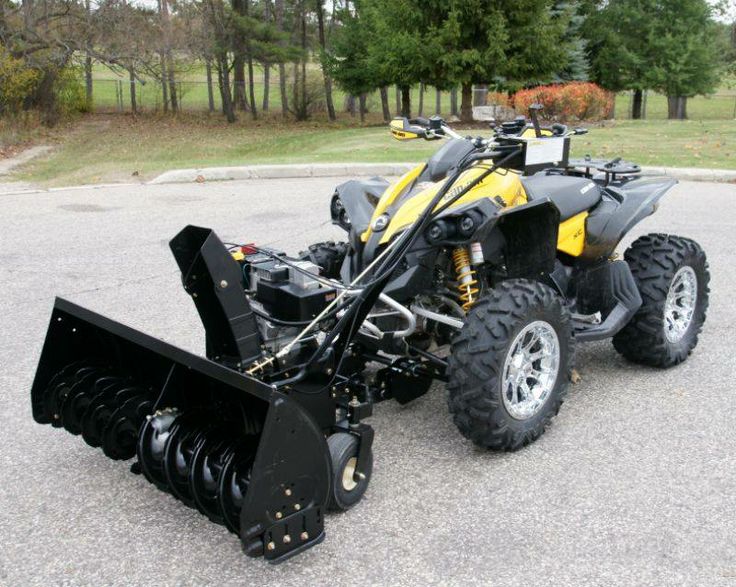 The longer the cable length, the greater the pulling force of the winch.
The longer the cable length, the greater the pulling force of the winch.
If there are no trees or fixtures nearby to hook onto, the anchoring technique can be used. Hammer iron reinforcement into the ground and organize a fulcrum from it.
The role of a fulcrum can also be performed by your friend's ATV.
After the cable is tensioned, check all connections, the fulcrum and the cable itself. Everything should be in the correct position, without twisting or twisting. If everything is ok, we move on.
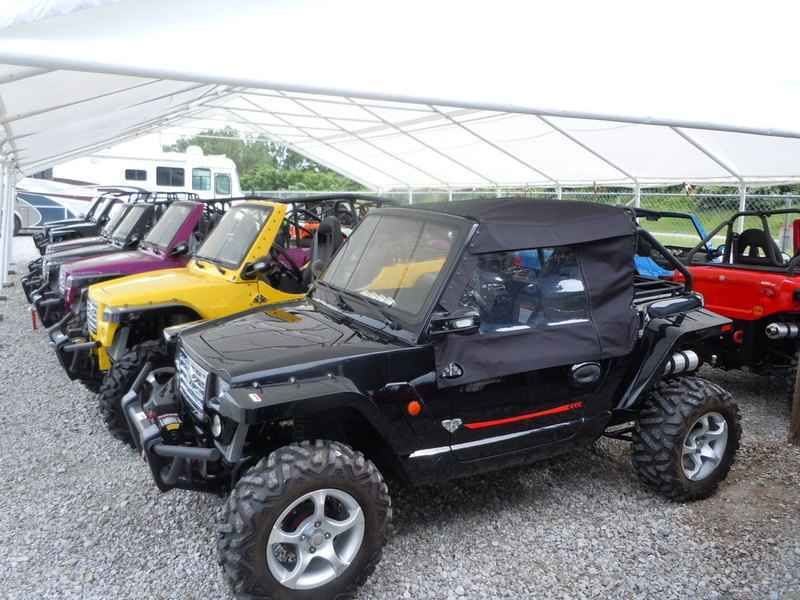 Otherwise, if the cable breaks, someone may be injured
Otherwise, if the cable breaks, someone may be injured Make sure the ATV is in neutral and the brakes are released before starting the winch.
Remember that the direction of travel is determined by the winch. You can slightly correct the course with the rudder of the ATV. That is why it is so important to initially choose the right route for pulling your equipment.
Once your ATV has been removed, you need to disassemble all of the linkages and reassemble the winch along with the accessories.
NEVER put your fingers in the drum. Even if the cable is wound incorrectly and you want to fix it. It is better to unwind the cable and do it all over again.
Tips
